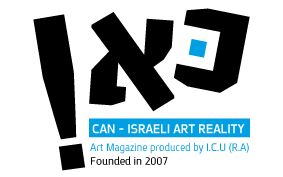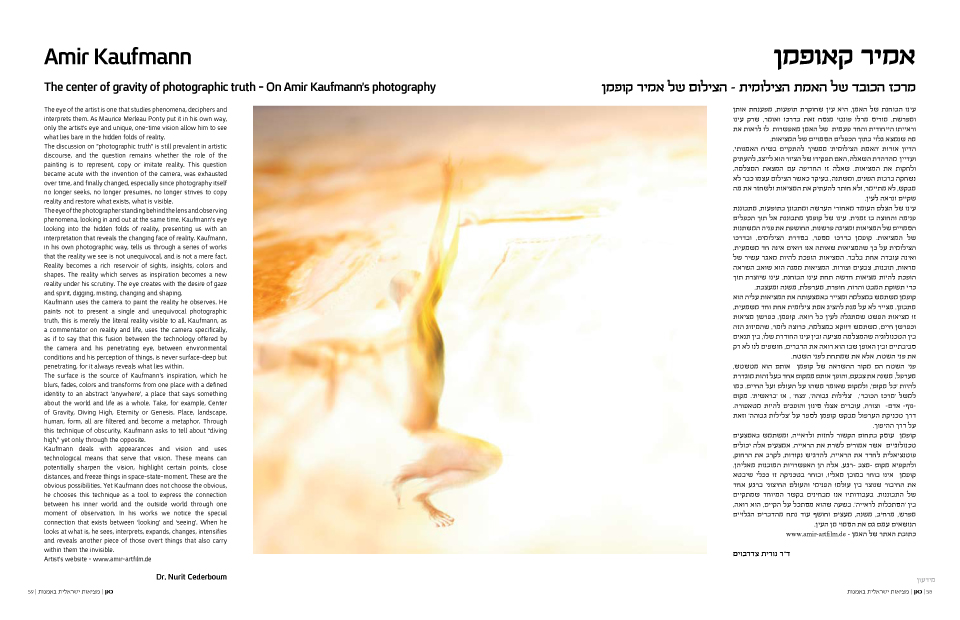
| Home Page | Editor Notices | Museums | Galleries | Publication | Donation | Contact Us |


 | |||||||||||||||
| |||||||||||||||


| |||||||||||||||
| Amir Kaufmann / The center of gravity of photographic truth - On Amir Kaufmann’s photography |
The eye of the artist is one that studies phenomena, deciphers and interprets them. As Maurice Merleau Ponty put it in his own way, only the artist’s eye and unique, one-time vision allow him to see what lies bare in the hidden folds of reality. The discussion on "photographic truth" is still prevalent in artistic discourse, and the question remains whether the role of the painting is to represent, copy or imitate reality. This question became acute with the invention of the camera, was exhausted over time, and finally changed, especially since photography itself no longer seeks, no longer presumes, no longer strives to copy reality and restore what exists, what is visible. The eye of the photographer standing behind the lens and observing phenomena, looking in and out at the same time. Kaufmann's eye looking into the hidden folds of reality, presenting us with an interpretation that reveals the changing face of reality. Kaufmann, in his own photographic way, tells us through a series of works that the reality we see is not unequivocal, and is not a mere fact. Reality becomes a rich reservoir of sights, insights, colors and shapes. The reality which serves as inspiration becomes a new reality under his scrutiny. The eye creates with the desire of gaze and spirit, digging, misting, changing and shaping. Kaufmann uses the camera to paint the reality he observes. He paints not to present a single and unequivocal photographic truth, this is merely the literal reality visible to all. Kaufmann, as a commentator on reality and life, uses the camera specifically, as if to say that this fusion between the technology offered by the camera and his penetrating eye, between environmental conditions and his perception of things, is never surface-deep but penetrating, for it always reveals what lies within. The surface is the source of Kaufmann's inspiration, which he blurs, fades, colors and transforms from one place with a defined identity to an abstract 'anywhere', a place that says something about the world and life as a whole. Take, for example, Center of Gravity, Diving High, Eternity or Genesis. Place, landscape, human, form, all are filtered and become a metaphor. Through this technique of obscurity, Kaufmann asks to tell about “diving high," yet only through the opposite. Kaufmann deals with appearances and vision and uses technological means that serve that vision. These means can potentially sharpen the vision, highlight certain points, close distances, and freeze things in space-state-moment. These are the obvious possibilities. Yet Kaufmann does not choose the obvious, he chooses this technique as a tool to express the connection between his inner world and the outside world through one moment of observation. In his works we notice the special connection that exists between ‘looking’ and ‘seeing’. When he looks at what is, he sees, interprets, expands, changes, intensifies and reveals another piece of those overt things that also carry within them the invisible. Artist’s website - www.amir-artfilm.de Dr. Nurit Cederboum Read more  |
| all rights reserved - CAN ISRAELI ART REALITY |
| סייבורג מחשבים - בניית אתרים |